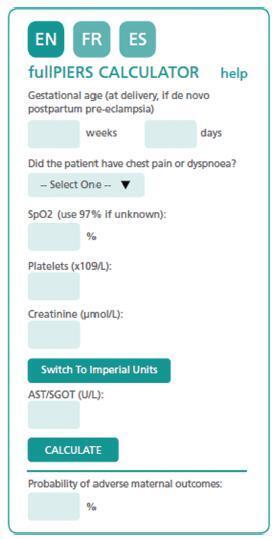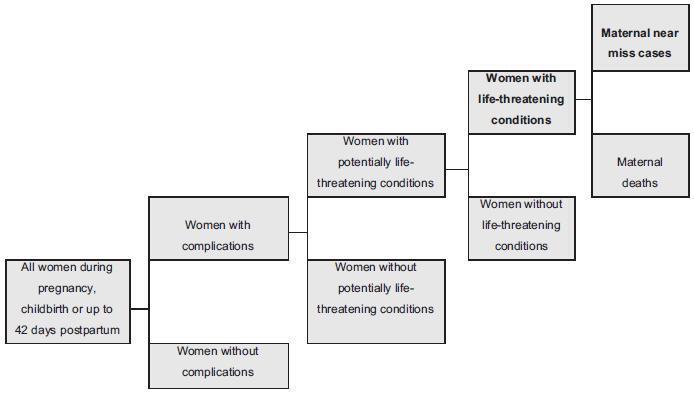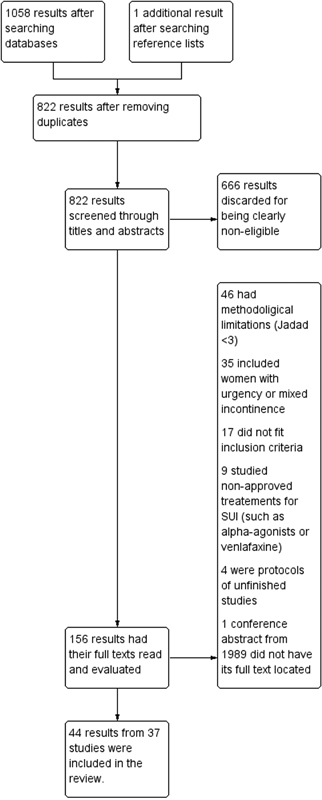-
Original Article07-10-2002
Intestinal Parasites, Anemia and Nutritional Status in Pregnant Women in a Public Health Care Unit
Revista Brasileira de Ginecologia e Obstetrícia. 2002;24(4):253-259
Abstract
Original ArticleIntestinal Parasites, Anemia and Nutritional Status in Pregnant Women in a Public Health Care Unit
Revista Brasileira de Ginecologia e Obstetrícia. 2002;24(4):253-259
DOI 10.1590/S0100-72032002000400007
Views118See morePurpose: to determine the frequency of enteroparasitoses in a group of pregnant women undergoing low-risk antenatal care and their association with anemia, maternal nutritional status, schooling and the existence of a bathroom in the home. Methods: to a sample of pregnant women who had begun low-risk antenatal care at IMIP’s Maternal Health Care Center between May 2000 and July 2001, a cross-sectional design was applied to determine the frequencies of enteroparasitoses (Hoffman method, in a single sample) and anemia (Hb <11.0 g/dL), nutritional status (through BMI standardized for stage of pregnancy) and social indicators (schooling and the existence of a bathroom in the home). Results: in a sample of 316 pregnant women, a rate of 37.4% enteroparasitosis was detected, of which 31.6% was infestation by a single parasite. The most commonly found parasite species were Entamoeba histolytica (13.3%) and Ascaris lumbricoides (12.0%). Anemia was detected in 55.4% of the pregnant women, malnutrition in 25.0% and overweight or obesity in 24.1%. There was a statistically significant association between enteroparasitosis and schooling. However, no association of, enteroparasitosis, anemia, maternal nutritional status with the existence of a bathroom in the home was noted. Conclusions: The prevalence of enteroparasitoses and anemia is high, albeit without any association of the two conditions, while schooling was statistically associated with the presence of intestinal parasites.
-
Original Article07-10-2002
Uterine Cervical Length Evaluation in the Standing and Recumbent Positions in Twin Pregnancies
Revista Brasileira de Ginecologia e Obstetrícia. 2002;24(4):247-251
Abstract
Original ArticleUterine Cervical Length Evaluation in the Standing and Recumbent Positions in Twin Pregnancies
Revista Brasileira de Ginecologia e Obstetrícia. 2002;24(4):247-251
DOI 10.1590/S0100-72032002000400006
Views146See morePurpose: to compare cervical length measurements in twin pregnancies obtained by transvaginal ultrasound examination in the recumbent and standing positions. Methods: fifty twin pregnancies underwent transvaginal ultrasound examinations to measure the cervical length with the women in recumbent and standing positions. The study was carried out between May 1999 and December 2000. The scans were repeated every 4 weeks and the total number of evaluations was 136. Two groups were analyzed: one included only the first ultrasound examinations carried out in each woman and the second group included all evaluations. Results: in the first group, cervical length measurements in the standing and recumbent positions correlated inversely with the gestational age (recumbent: r=-0.60; p<0.001; standing: r=-0.46; p=0.008). The mean measure in the recumbent position was 35.2 mm (SD=9.9 mm) and 33.4 mm (SD=9.5 mm) in the standing position. When the difference between the measure obtained in the standing and recumbent positions was expressed as percentage of the measure in the recumbent position, there was no significant association with gestational age (p=0.07). When all evaluations were considered, there was a significant association between cervical length in the recumbent and standing positions (r=0.79; p<0.001). The measures in recumbent and standing positions were inversely correlated with gestational age (recumbent: p<0.0001; standing: p<0.0001). The mean cervical length in the recumbent position was 33.5 mm (SD=10.8 mm) and 31.8 mm (SD=9.6 mm) in the standing position. There was no significant association between cervical length difference expressed as percentage of the measure in the recumbent position and gestation. Conclusion: cervical length measure obtained with the patients in the recumbent and standing positions provided similar information.
-
Original Article07-10-2002
Primary Tuberculosis of the Breast
Revista Brasileira de Ginecologia e Obstetrícia. 2002;24(4):241-246
Abstract
Original ArticlePrimary Tuberculosis of the Breast
Revista Brasileira de Ginecologia e Obstetrícia. 2002;24(4):241-246
DOI 10.1590/S0100-72032002000400005
Views154See morePurpose: to make a differential diagnosis in regard to breast carcinoma and to evaluate diagnostic and clinical methods in the treatment of breast tuberculosis and the follow-up after adequate treatment. Patients and Methods: three patients with breast tuberculosis were observed from March 2001 to March 2002; the first two were hospitalized at our Mastology Department and the third patient was treated at a private clinic. The clinical signs and symptoms, laboratory findings, response to therapy and follow-up were evaluated. Results: the average age of the patients was 40.6 years. The most frequent signs and symptoms were pain and breast tumor. In two patients the presumptive diagnosis was based on the clinical findings, on the histological findings (granulomatous inflammatory process), and on the therapeutic response to tuberculostatic drugs. Only one patient had a microbiological diagnosis, as Koch’s bacillus was identified in a sample of her breast tissue. Treatment with a triple tuberculostatic regimen, including rifampin, isoniazid and pyrazinamide, led to the regression of the lesions. Conclusion: primary breast tuberculosis, a rare occurrence which may present clinically as a breast nodule and radiologically as carcinoma, should be taken into account when making the differential diagnosis of patients presenting with mammary mass.
-
Original Article07-10-2002
Analysis of Urinary Tract Vessels during and after Pregnancy in Rats
Revista Brasileira de Ginecologia e Obstetrícia. 2002;24(4):227-231
Abstract
Original ArticleAnalysis of Urinary Tract Vessels during and after Pregnancy in Rats
Revista Brasileira de Ginecologia e Obstetrícia. 2002;24(4):227-231
DOI 10.1590/S0100-72032002000400003
Views83See morePurpose: to evaluate the variations in vascular anatomy by assessing the number of vessels of the proximal and distal urethra, of the vesicourethral canal and of the bladder, during and after pregnancy in rats. Method: thirty female rats, with a positive test for pregnancy, were divided into three groups of 10 animals each: GI – rats on the 10th day of pregnancy; GII – rats on the 20th day of pregnancy; GIII – rats on the 5th day of puerperium; a control group (GIV) composed of 10 rats in the estrous phase. The vessels were stained by the method of Masson and counted with a 25-dot integration ocular, coupled to a light microscope, with an objective of 40X. The studied regions were proximal and distal urethra, vesicourethral canal and bladder. Results: there was no significant variation in the vessel number in the bladder, in the vesicourethral canal and in the proximal urethra during gestation. In the distal urethra of the group IV there were 13.7 vessels, less than that observed in the pregnant groups (20.5 to 24.4 vessels). Conclusion: the pregnant rats had a larger number of vessels in the distal urethra than those in the estrous phase. There were no differences regarding the other sites.
PlumX Metrics
- Citations
- Citation Indexes: 1
- Usage
- Full Text Views: 9232
- Abstract Views: 551
- Captures
- Readers: 6
-
07-10-2002
Câncer do Colo Uterino
Revista Brasileira de Ginecologia e Obstetrícia. 2002;24(4):219-219
Abstract
Câncer do Colo Uterino
Revista Brasileira de Ginecologia e Obstetrícia. 2002;24(4):219-219
-
Original Article06-28-2002
Dopplervelocimetry of the Arterial and Venous Compartments of the Fetal and Umbilical Circulation in High-Risk Pregnancy: Perinatal Results
Revista Brasileira de Ginecologia e Obstetrícia. 2002;24(3):153-160
Abstract
Original ArticleDopplervelocimetry of the Arterial and Venous Compartments of the Fetal and Umbilical Circulation in High-Risk Pregnancy: Perinatal Results
Revista Brasileira de Ginecologia e Obstetrícia. 2002;24(3):153-160
DOI 10.1590/S0100-72032002000300002
Views148See morePurpose: to study the fetal hemodynamic profile in high-risk pregnancy and correlate it with perinatal results. Methods: transverse prospective study of 108 patients of the Obstetric Clinic of the Hospital das Clínicas, São Paulo University School of Medicine. The patients were evaluated at the Fetal Surveillance Unit, and Doppler examinations of umbilical, aorta, middle cerebral artery, inferior vena cava and ductus venosus were performed. The criteria for inclusion were patients whose delivery was in the next 24 hours after evaluation. Twin pregnancies and fetal malformations were excluded. Results: the hemodynamic implications in the fetal circulation were demonstrated by changes in the Doppler ultrasonographic results in the umbilical artery, aorta, middle cerebral artery, ductus venosus and in the inferior vena cava. The Doppler examinations were abnormal in the umbilical artery (25.9%), fetal aorta (24%), middle cerebral artery (34.2%), ductus venosus (18.2%) and inferior vena cava (46,6%). Segments of the fetal circulation which best correlated with the perinatal results were the umbilical artery and the ductus venosus. The abnormal results in the umbilical artery were significantly associated with 1st minute Apgar score <7 in 42.8% and need of neonatal intensive care unit in 50% of the cases. The abnormal results in the ductus venosus Doppler ultrasonography showed statistical association with 1st minute Apgar score <7 (52.6%), 5th min Apgar <7 (15.7%), acidemia at birth (60%), need of neonatal intensive care unit (52.6%) and neonatal death (21.1%). The predictive values of the ductus venosus Doppler for fetal acidemia were: sensitivity of 39.1; specificity of 90.4; positive predictive value of 60.0 and negative predictive value of 80.2. Conclusion: the Doppler ultrasonography allowed us to evaluate the fetal hemodynamics in the most varied situations and the study of the venous duct is an important examination in the evaluation of fetal hemodynamic response to hypoxia.
PlumX Metrics
- Citations
- Citation Indexes: 3
- Usage
- Full Text Views: 31667
- Abstract Views: 1501
- Captures
- Readers: 7
-
06-27-2002
Prevalência dos Genótipos do Papilomavírus Humano na Cérvice Uterina de Pacientes Infectadas com o Vírus da Imunodeficiência Humana e sua Associação com o Grau das Lesões do Colo Uterino
Revista Brasileira de Ginecologia e Obstetrícia. 2002;24(3):206-206
Abstract
Prevalência dos Genótipos do Papilomavírus Humano na Cérvice Uterina de Pacientes Infectadas com o Vírus da Imunodeficiência Humana e sua Associação com o Grau das Lesões do Colo Uterino
Revista Brasileira de Ginecologia e Obstetrícia. 2002;24(3):206-206
DOI 10.1590/S0100-72032002000300012
Views42Prevalência dos Genótipos do Papilomavírus Humano na Cérvice Uterina de Pacientes Infectadas com o Vírus da Imunodeficiência Humana e sua Associação com o Grau das Lesões do Colo Uterino.[…]See more -
06-27-2002
Estudo Quantitativo da Apoptose no Epitélio Mamário Adjacente ao Fibroadenoma em Mulheres no Menacme Tratadas com Diferentes Doses de Tamoxifeno
Revista Brasileira de Ginecologia e Obstetrícia. 2002;24(3):206-206
Abstract
Estudo Quantitativo da Apoptose no Epitélio Mamário Adjacente ao Fibroadenoma em Mulheres no Menacme Tratadas com Diferentes Doses de Tamoxifeno
Revista Brasileira de Ginecologia e Obstetrícia. 2002;24(3):206-206
DOI 10.1590/S0100-72032002000300013
Views55Estudo Quantitativo da Apoptose no Epitélio Mamário Adjacente ao Fibroadenoma em Mulheres no Menacme Tratadas com Diferentes Doses de Tamoxifeno […]See more
Search
Search in:
Tag Cloud
Pregnancy (252)Breast neoplasms (104)Pregnancy complications (104)Risk factors (103)Menopause (88)Ultrasonography (83)Cesarean section (78)Prenatal care (71)Endometriosis (70)Obesity (61)Infertility (57)Quality of life (55)prenatal diagnosis (51)Women's health (48)Maternal mortality (46)Postpartum period (46)Pregnant women (45)Breast (44)Prevalence (43)Uterine cervical neoplasms (43)






